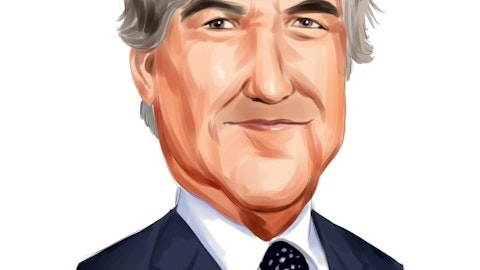Anthony Powell : Thanks. Maybe switching gears to the same-store expense guidance in the hurricane and the insurance impact. How much of the growth is driven by the resetting of the insurance rates? And do that — those insurance resets cover just the impact of properties, Florida as a whole, lease portfolio. maybe more detail there would be super helpful.
Paul Seavey: Yes. I guess kind of as I think about our guidance assumptions for expenses, I’ll cover insurance and utilities, both because I think those are the two key areas to focus on. those line items on a combined basis represent about 1/3 of our total core property operating expenses. Regarding the insurance, we’re in the process of negotiating with our insurance carriers. So, I’m not really inclined to disclose too much on this call. I will remind you, though, that we’ve talked about over the past five years or so, we’ve seen premium increases around 20% each year. Our policy renewal is April 1, and we plan to provide an update on the first quarter call as far as how we progress. With regard to utilities, our growth assumptions are based on various factors, including projections of rate increases that we’ve identified directly from the utilities to the extent we have noticed.
We also have two third-party advisers that we rely on for this information and the eia.gov website for the Energy Information Administration. So, make all of that information, triangulate that and come up with our model for utility expense increases.
Anthony Powell : Thank you.
Marguerite Nader: Thank you, Anthony.
Operator: Thank you. Our next question comes from the line of Brad Heffern with RBC. Your line is open.
Brad Heffern: Hi thanks. You had a strong fourth quarter and operating expenses with the 2.1% growth, but the guidance obviously shows a reacceleration to a figure that’s a little bit above what you reported in 2022. Can you walk through first, what led to the low figure in the fourth quarter? And why you would expect that to pick back up meaningfully?
Paul Seavey: Yes, I think our experience in the fourth quarter, we had some moderation in expenses, primarily moderation in our payroll and our utility expense. And then I did mention that R&M and our insurance lines were down in the fourth quarter. I’ll cover the year-over-year reduction first. We have an annual process related to our casualty insurance line, and we’ll take a look at the reserves that we have established. As we review the activity at the end of the year, we identified favorable development and that supported a reduction in the reserves on the balance sheet and thereby reduce the insurance expense. The R&M expense savings resulted really from a favorable comp that we had because there were some elevated expenses in R&M in 2021.
The moderation in utility expense attribute that primarily to a change in the mix of operations from the third quarter to fourth quarter as we exited the summer season. And payroll expense growth moderated mainly as a result of reduced reliance on overtime as we stabilized staffing to pre-pandemic levels in 2022, we reduced our reliance on over time, which generated savings year-over-year in the fourth quarter.
Brad Heffern: Okay. Got it. So, I guess why, like, for instance, the payroll, presumably you’d have easier comps in 2023 as well. So, is that just being overwhelmed by the insurance and the utility expense? Is there something else going on there?
Paul Seavey: No. Well, I think it’s less about the fourth quarter being an indicative run rate and more about kind of the fourth quarter activity. I think looking to the full year of 2022, considering where we are with CTI headed into 2023. Those are the key drivers. And then as I said a moment ago, and keep in mind that 1/3 of our expenses are utilities and insurance, and we’re talking about increases that are meaningfully higher than CPI expected from 1/3 of our expense base.




